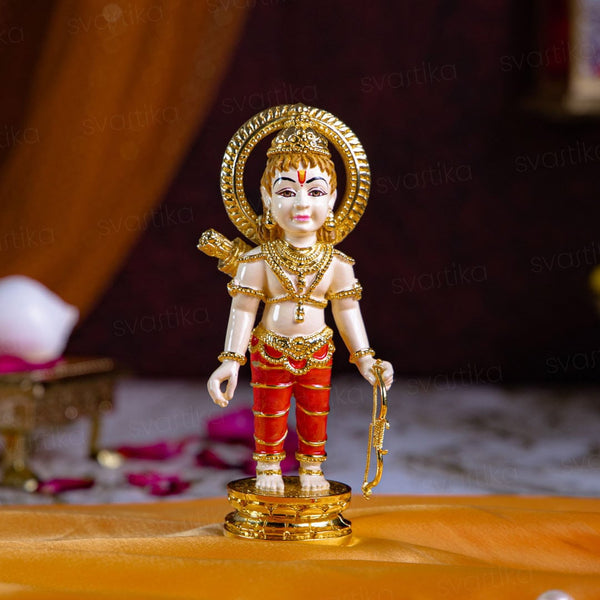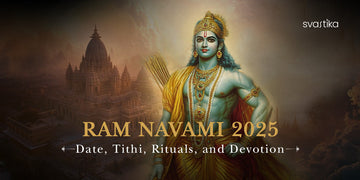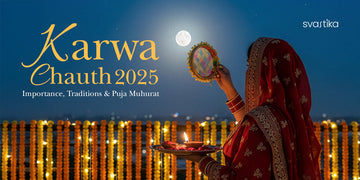Sri Rama Navami is not just a festival; it's a heartfelt tribute to Lord Ramachandra’s divine appearance in Ayodhya during the Treta Yuga. Imagine a time when righteousness prevailed, and Lord Vishnu himself descended in his most divine and graceful form as Shri Ramachandra to uphold Dharma. Through his extraordinary life, he set the highest standards of bravery, morality, governance, humility, and sacrifice.
The ancient scriptures reveal that the Lord takes various incarnations to uphold Dharma and defeat evil. Every act of Shri Ramachandra, from his exile to the victory over Ravana, is revered, celebrated, and deeply reflected upon by his devotees. And what better way to honor these divine deeds than by coming together in devotion and celebration?
As we explore this auspicious occasion, we will delve into its deeper significance. Further in this article, you’ll find details about Ram Navami 2025: Date, Tithi, Rituals , and Devotion, along with insights into Famous Temples for Ram Navami Celebrations where this grand festival is observed with unparalleled devotion. Stay with us as we take you on this spiritual journey!
Ram Navami Puja & Fasting 2025: Traditions Observed on This Auspicious Tithi
Rama Navami on Sunday, April 6, 2025
Rama Navami Madhyahna Muhurat - 11:08 AM to 01:39 PM
Duration - 02 Hours 31 Mins
Sita Navami on Monday, May 5, 2025
Rama Navami Madhyahna Moment - 12:24 PM
Navami Tithi Begins - 07:26 PM on Apr 05, 2025
Navami Tithi Ends - 07:22 PM on Apr 06, 2025
Lord Brahma in his scriptural treatise Brahma Samhita prays to the Lord reciting:
ramadi-murtishu kala-niyamena tishthan
nanavataram akarod bhuvaneshu kintu
krishnah svayam samabhavat paramaha puman yo
govindam adi-purusham tam aham bhajami
Meaning: Lord Brahma’s prayers affirm that the Supreme Lord manifests in various incarnations, including Rama, who embodies justice, righteousness, and the triumph over evil. Celebrated during spring Navratri, Ram Navami falls on the ninth day of Chaitra’s Shukla Paksha, symbolizing the divine birth of Lord Rama.
Ram Navami Rituals and Traditions
-
Early Morning Rituals
Devotees wake up early, take a holy bath, and offer prayers to Lord Rama. Reading the Ramayana, chanting Rama mantras, and visiting temples are common practices for seeking divine blessings. -
Fasting Traditions
Fasting on Ram Navami is considered spiritually significant. Devotees observe either a Nirjal Vrat (without water) or a phalahar vrat (fruits, milk, and water). Some consume sattvic foods like sabudana, Kuttu, and milk-based dishes, breaking the fast after midnight puja. -
Puja and Bhajans
Devotees offer flowers, tulsi leaves, fruits, and prasad to Lord Rama. Temples and homes resonate with bhajans, kirtans, and Ramayana recitations. -
Celebrations
Grand Shobha Yatras featuring divine idols, spiritual talks, folk dances, and devotional singing mark the celebrations. -
Importance of Charity
Acts of seva include feeding Brahmins, distributing clothes, food, and prasad, emphasizing selfless service.
Brass Ram Symbol Diya (5 Inch)
The Origins and Historical Journey of Ram Navami
1. Origins of Ram Navami
One of the oldest festivals in India, Ram Navami originated in Vedic times. Its significance has been handed down in the Kalika Purana, proffering a deep-rooted Hindu heritage. Under the rigid caste system, Ram Navami was one of the few festivals that all castes could celebrate together. Observing a fast on this day is supposed to bring someone moksha (liberation), making it one of the most revered festivals in Hinduism.
2. When and How is Ram Navami Celebrated?
Ram Navami falls on the ninth day (Navami) of Chaitra month during Shukla Paksha (waxing moon), typically in March or April. Devotees celebrate by fasting, singing bhajans, and reciting the Ramayana in temples and homes across India.
3. The Birth of Lord Rama
In 5114 BCE, King Dasharatha of Ayodhya performed the Putra Kamesti Yagna and received a divine bowl of payasam. He shared it with his three wives, and by the next morning, they were blessed with four sons. Rama, the eldest, was followed by Lakshmana, Bharata, and Shatrughna.
4. Lord Rama’s Divine Mission
Lord Rama’s mission was to defeat Ravana and establish a kingdom based on Dharma, setting an ideal for humanity. His journey represents the principles of truth, justice, and unwavering devotion to duty, making him a Maryada Purushottama (the ideal man).
5. The Evolution of Ram Navami Celebrations
Ayodhya’s residents began honoring Lord Rama’s birth, and over time, it evolved into the grand festival celebrated today.
Famous Temples for Ram Navami Celebrations
1. Ram Janmabhoomi, Ayodhya (Uttar Pradesh)
The birthplace of Lord Rama Ayodhya celebrates Ram Navami with great fanfare. At Ram Janmabhoomi Temple devotees gather to observe religious talks, bhajans and special pujas.
2. Sita Ramachandraswamy Temple, Bhadrachalam (Telangana)
Attracting thousands of devotees, this temple is well-known for its lavish Ram Navami kalyanam (celestial wedding) of Lord Rama and Sita.
3. Raghunath Temple, Jammu (Jammu & Kashmir)
This temple, a major destination for pilgrims, hosts Ramayana recitations, processions and special pujas.
4. Kodandarama Temple, Vontimitta (Andhra Pradesh)
During Ram Navami this temple which is well-known for its magnificent Brahmotsavam sees a huge turnout.
5. Ramanathaswamy Temple, Rameswaram (Tamil Nadu)
This temple, one of the Char Dham pilgrimage sites, honors Ram Navami with spiritual talks and ornate rituals.
Significance of Ram Navamai
The Sun was revered by ancient Egyptians as Amon Ra, or simply Ra. In Latin, the syllable Ra is linked to light, seen in words like radiance (emitting light) and radium (a glowing substance). Across various languages, Ra is associated with the Sun's brilliance.
Interestingly, the presence of "Ra" in Lord Rama’s name suggests that Ram Navami might have originated as a Sun festival before the Ramayana. Migrant groups entering India worshiped the Sun, and many royal dynasties used solar symbols like the Sun, Eagle, and Lion to represent power. Since Lord Rama belonged to the Suryavanshi (Solar Dynasty), Ram Navami may have been linked to a solar festival.
Teachings of the Ramayana
The Ramayana imparts divine wisdom through Lord Rama’s life. His name means one who brings joy, and chanting Rama Nama is believed to bring purity, wisdom, and liberation. Despite his great power, Lord Rama embodied kindness, morality, and humility. His life teaches us ideal virtues as a husband, father, brother, and son. His reign, Rama Rajya, symbolizes dharma and just governance.
Childhood Form of Lord Ram - Gold Plated (6 Inch) Svastika Ram Darbar Pocket Temple - Gold Plated

Conclusion
Ram Navami is more than just a festival; it is a celebration of Dharma, devotion, and righteousness. Lord Rama’s life offers timeless lessons in morality, duty, and humility, making him a lasting symbol of virtue. The rituals, fasting, and ceremonies reflect the deep faith of devotees, uniting people through prayers,gatherings and acts of charity. His unwavering commitment to justice and truth inspires us to uphold righteousness, even in challenging times. In today’s world, Ram teachings of integrity, patience, and resilience guide us toward peace and harmony. Ram Navami reminds us to adopt these values, leading to spiritual growth and moksha.








